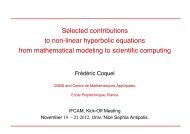The construction of the wonderful canon of logarithms
The construction of the wonderful canon of logarithms
The construction of the wonderful canon of logarithms
Create successful ePaper yourself
Turn your PDF publications into a flip-book with our unique Google optimized e-Paper software.
i6<br />
Construction <strong>of</strong> <strong>the</strong> Canon.<br />
Third Column,<br />
9801000, 0000<br />
9796099. 5000<br />
9791201. 4503<br />
9786305, 8495<br />
9781412, 6967<br />
a<br />
en<br />
O<br />
rt- (D<br />
O D o<br />
5'<br />
OfQ<br />
9703454.1539<br />
<strong>The</strong>nce ^th, ^th,<br />
&•€., up to<br />
&C., up to<br />
&C., up to<br />
&C., up to<br />
&c., up to<br />
&Ci, up to<br />
finally to<br />
69//^ Column.<br />
5048858.8900<br />
5046334.4605<br />
504381 1.2932<br />
5041289.3879<br />
5038768.7435<br />
3^<br />
4998609.4034<br />
21. Thus, in <strong>the</strong> Third table, between radius and half<br />
radius, you have sixty-eight numbers interpolated, in <strong>the</strong><br />
proportion <strong>of</strong> 100 to 99, and between each two <strong>of</strong> <strong>the</strong>se you<br />
have twenty numbers interpolated in <strong>the</strong> proportion <strong>of</strong><br />
1 0000 to ;<br />
9995 and again, in <strong>the</strong> Second table, between<br />
<strong>the</strong> first two <strong>of</strong> <strong>the</strong>se, namely between 1 0000000 and<br />
9995000, you have fifty numbers interpolated in <strong>the</strong> proportion<br />
<strong>of</strong> 1 00000 to 99999; and finally, in <strong>the</strong> First<br />
table, between <strong>the</strong> latter, you have a hundred numbers<br />
interpolated in <strong>the</strong> proportion <strong>of</strong> radius or 1 0000000 to<br />
9999999 and ; since <strong>the</strong> difference <strong>of</strong> <strong>the</strong>se is never more<br />
than unity, <strong>the</strong>re is no need to divide it more minutely by<br />
interpolating means, whence <strong>the</strong>se three tables, after <strong>the</strong>y<br />
have been completed, will suffice for computing a Logarithmic<br />
table.<br />
Hi<strong>the</strong>rto we have explained how we may most easily<br />
place in tables sines or natural numbers progressing in<br />
geometrical proportion.<br />
22. It remains, in <strong>the</strong> Third table at least, to place beside<br />
<strong>the</strong> sines or natural numbers decreasing geometrically<br />
<strong>the</strong>ir


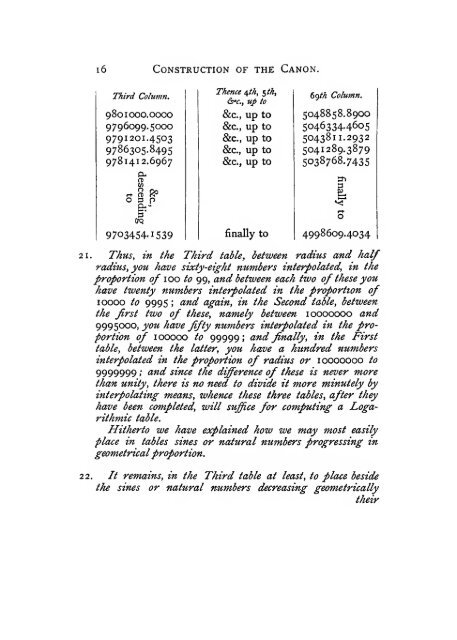
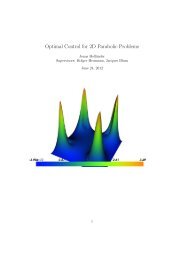
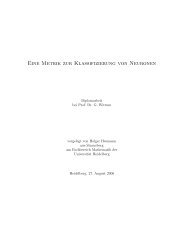
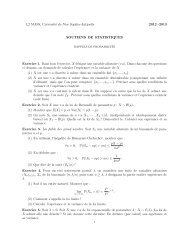
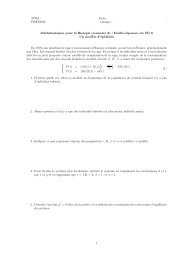


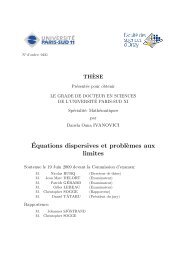
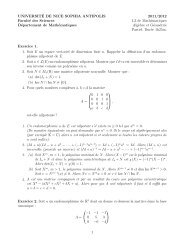
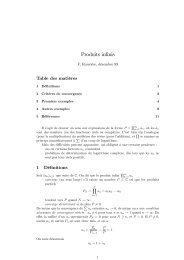
!['eries enti\`eres (+ [D78 Th d'Abel angulaire])](https://img.yumpu.com/14067031/1/184x260/eries-entieres-d78-th-dabel-angulaire.jpg?quality=85)
